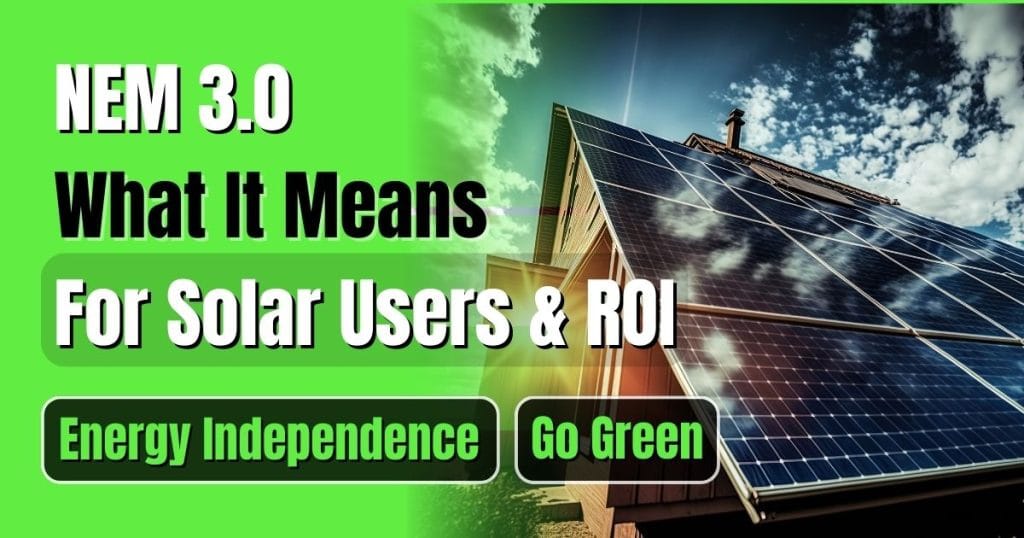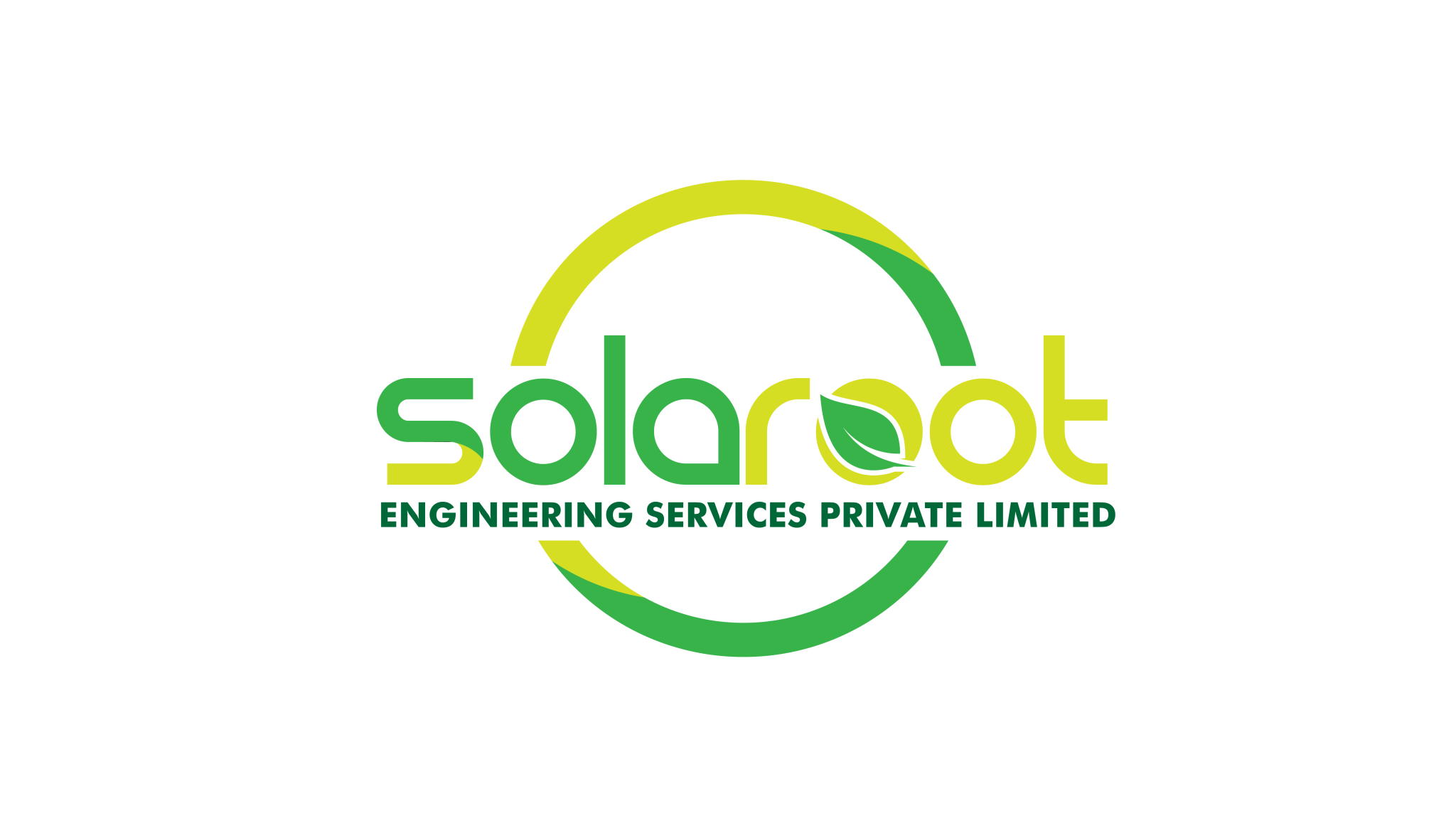Do you know, the NEM 3.0 has reduced the rewards for homeowners by up to 75%?
You may wonder what this latest version brings for you. There is a significant difference between NEM 2.0 and NEM 3.0. However, this newest version of NEM offers fewer benefits to homeowners by reducing the rewards, significantly impacting homeowner expectations. Though every policy provides some advantages, it also has its drawbacks.
In today’s article, we’ll explore the pros and cons of NEM 3.0 to help you understand its impact on your energy choices and maximize the ROI under this policy. We will also compare all versions of net energy metering policies.
What is Net Energy Metering?
Net Energy Metering, or NEM, is a billing policy in which homeowners with solar systems can earn credits from their utility company.
It works like this: If your solar panel system generates more electricity than your home requires, you can sell the excess electricity returned to the power grid. The rate you receive for the excess electricity would be the same as when you bought it from the grid.
If your solar panels aren’t producing enough electricity, you can use those credits to offset the cost of electricity that you need to get from the grid. (e.g., At night or early morning)

When a solar system produces enough electricity as the home requires over time, it can significantly lower electricity bills. You can save a lot of money over the 25-year lifespan of a solar system.
The key highlights of NEM 3.0
- Solar systems installed before April 15, 2023, will keep their existing net metering policy for 20 years from their connection date.
- The payback period for the solar and battery storage system may be the same as for the solar-only system.
- Under the NEM 3.0 policy, solar system users will earn 75% less for the excess electricity they pass on to the grid.
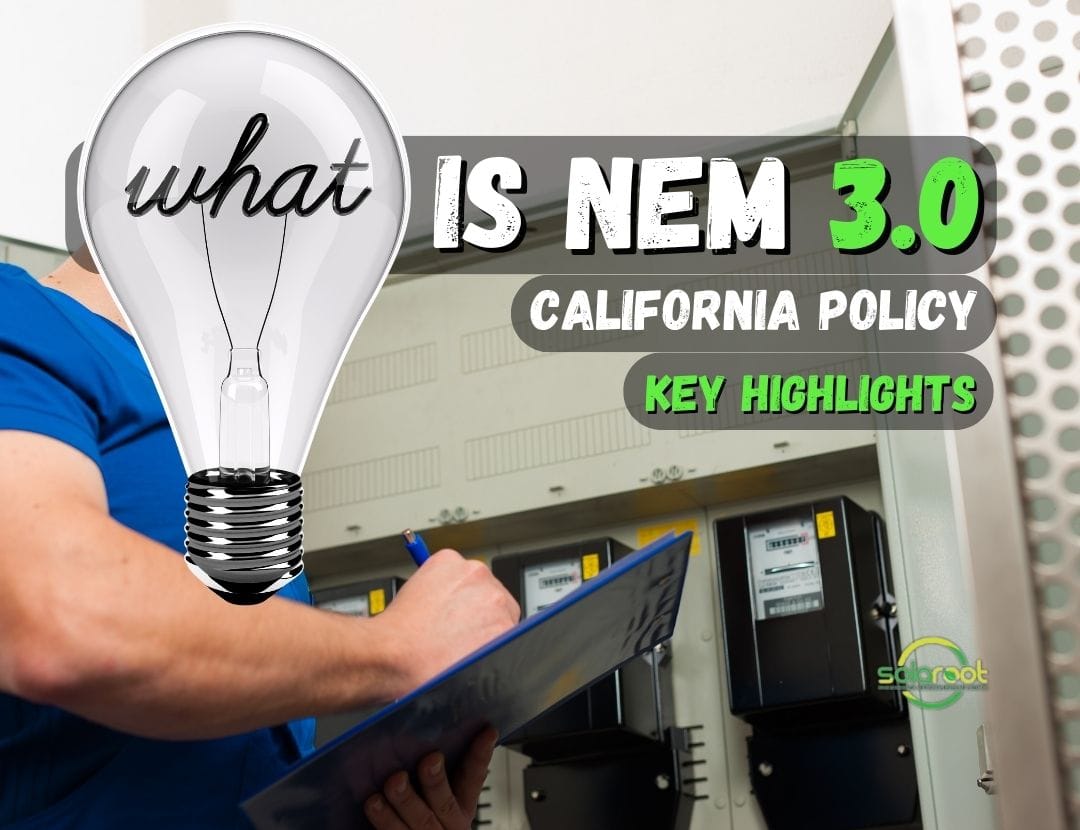
What is NEM 3.0 in California?
The net energy metering (NEM) policy began with good reason. It focused on environmental benefits and rewarded homeowners with solar panels by allowing them to sell the remaining solar energy back to the grid. However, you might be thinking, what is NEM 3.0? The latest version of NEM (NEM 3.0) has reduced that compensation by up to 75%.
It’s applicable for people who get their utilities from California’s top major investor-owned utilities. (IOUs)
- Pacific Gas & Electric (PG&E) Southern California Edison (SCE)
- San Diego Gas & Electric (SDG&E)
For more accurate information, visit the official California Public Utilities Commission website: Net Energy Metering and Net Billing.
What are the Impacts of NEM 3.0
While NEM 3.0 already has been effective, let’s take a look at its significant impacts:
- Fees for Grid Participation
There are necessary grid participation fees that the utility department will charge solar users under NEM 3.0. Solar users now have to pay $8 per kW of solar capacity; previously, in NEM 2.0, the fee was $10 per month.
So, if you’re a homeowner with an average 5 kW solar system, you expect to pay a monthly fee of $40 just to be connected to the grid.
- Long-term export rates
Another impact of NEM 3.0 is that homeowners must accept the fixed solar export rate for nine years. After nine years, the utility company will only review and reset these rates every two years. Put another way, you must wait almost a decade to change your export rate.
- Reduced long-term savings
NEM 3.0 significantly reduced the lifetime savings of a new solar installation. Under NEM policy, a homeowner can only save a maximum of $73,000 in most favorable cases, whereas previously, they could save up to $116,000 with solar panels.
- Financial benefits of combining solar panels with batteries.
- Grandfathering provisions
- Adding energy storage to the existing system
- Lower electricity bill savings
- Transition period
- Impact on Solar Payback Period
- Slower solar panel adoption in California.
Homeowners who installed solar power systems under NEM 1.0 and NEM 2.0 by April 14, 2023, can rest assured knowing that their policy won’t be affected by the NEM 3.0 policy. Your NEM program will remain the same as the previous NEM plan for 20 years from the initial date your system was placed into service.
How to Maximize ROI under NEM 3.0?
Choose the right battery size to maximize your return on investment (ROI). Under NEM 3.0, many people invest in a solar panel system with battery storage for the maximum benefits. If you want to increase your ROI, this NEM introduces a time-of-use (TOU) rate structure and lowers the value of exported solar energy.
Here are the strategies that will help you to maximize your profit-
Maximizing ROI
The profit you used to get has been lowered in the NEM 3.0. So, homeowners who want to maximize their ROI under NEM 3.0 can utilize these strategies.
- Use More Solar Energy – Self-Consumption: Increase the energy self-consumption and start using solar energy directly to increase the ROI. Use the most electricity during daylight when your solar panel system generates power. You can do laundry, EV charging, or any other work. Electricity from the grid is most costly during peak hours ( afternoon and early evening). This way, you don’t rely on the grid.
- Optimize energy-intensive activities: Shift all your energy-intensive activities, such as laundry, EV charging, etc., to off-peak hours when electricity is cheaper (e.g., early morning or at night.)
- Use smart home technologies: Another way to implement smart home technologies is to install smart devices that automatically shift energy usage based on the time-of-use rates.
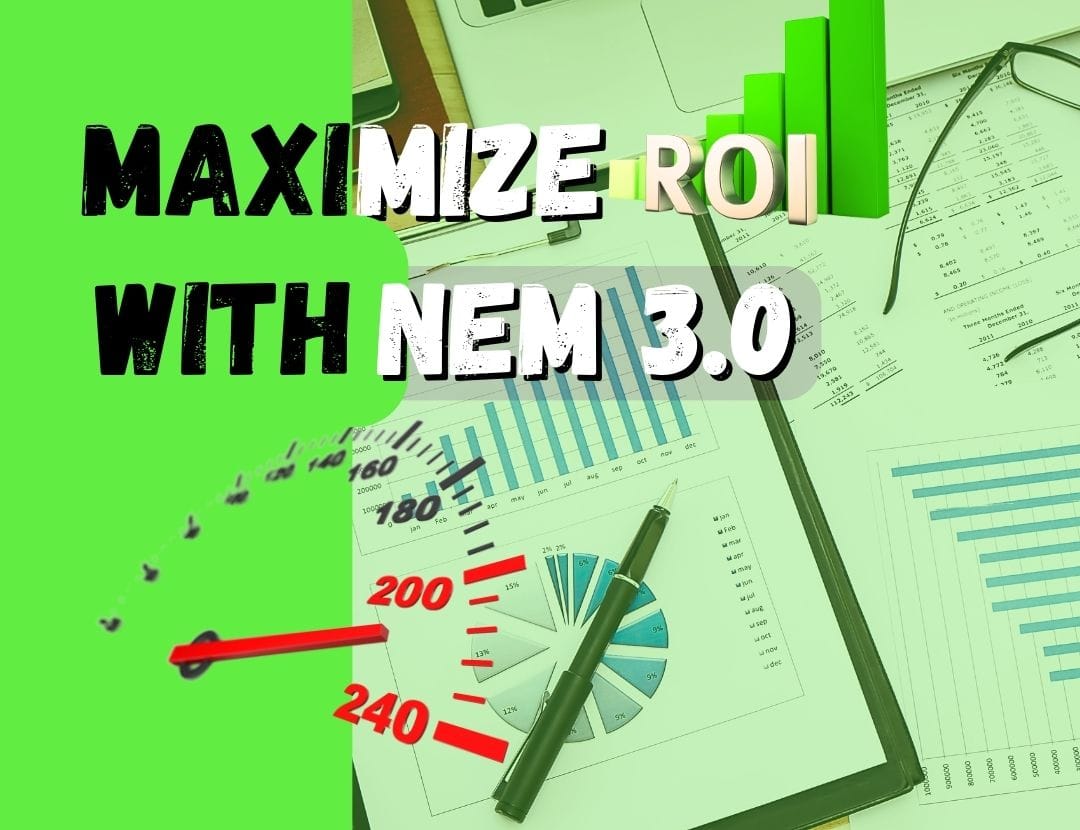
Key Changes of NEM 3.0 California
Before we discuss the return on investment (ROI) in the solar system, let’s first shortly and quickly have a look at the significant highlights of NEM 3.0 in California:
- Lower export rate: In NEM 3.0, you will be rewarded at a lower rate for the sold energy you send to the grid, making self-consumption a more valuable option.
- TOU rate structure: NEM 3.0 introduced the Time-of-use structure. Electricity rates vary depending on the day, making them more expensive during peak hours.
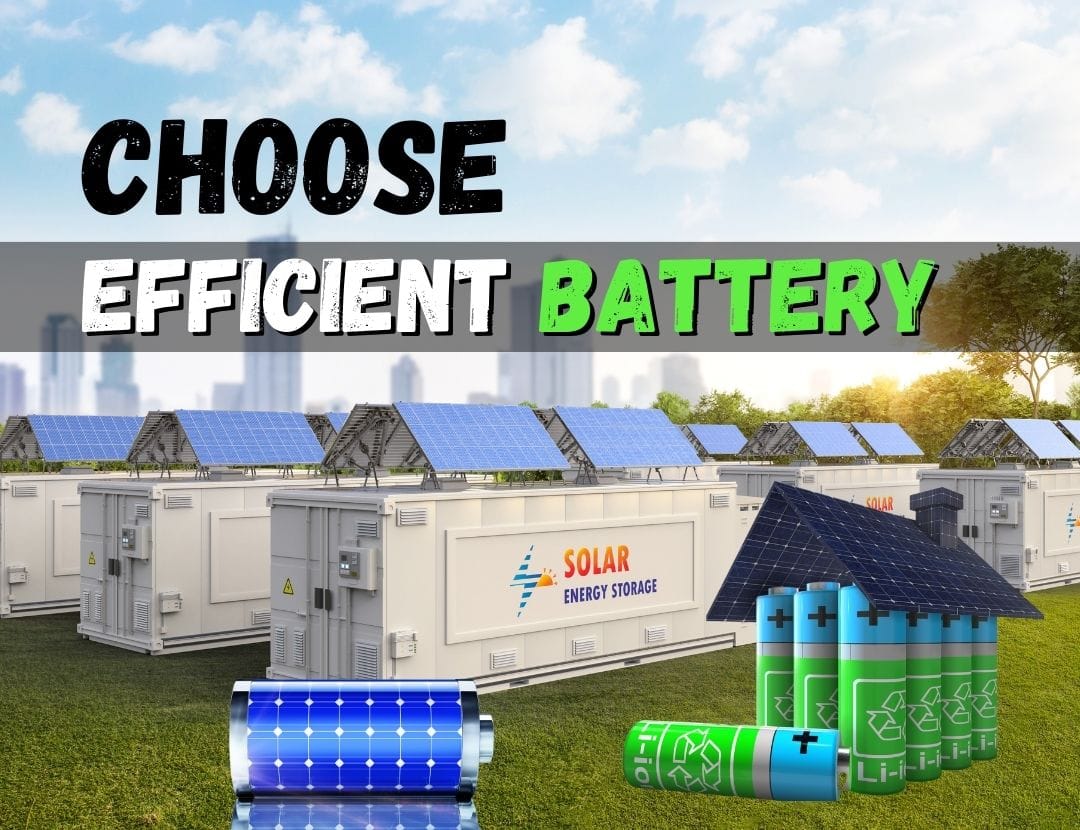
Battery size and optimization
Battery power played a significant role in NEM 3.0 in California. However, you can’t choose batteries randomly for your solar panel system. You need to ensure the battery’s capacity, size, and efficiency.
Let’s understand how a solar system with battery storage can help you get the most return on your solar power investment.
- Know your energy needs: To choose the correct-sized battery, you must first know your battery consumption. Check how much energy you need daily and when it is most required, whether during peak or off-peak hours.
- Use batteries for peak shaving: During sunlight, your solar system can consume more than sufficient energy, and electricity is also expensive during these hours. So, store the energy in a battery and use it during peak hours. This will reduce your need to buy high-cost power.
- Battery efficiency & Size: You must know the battery capacity you choose. Calculate your energy usage, especially when your solar panel isn’t generating (e.g., at night). This will help you analyze the battery capacity and whether it’s large enough to cover this usage and minimize your electricity bills; however, it shouldn’t be too large that you pay for extra unused capacity.
Choose Solar Batteries
While NEM 3.0 only reduces the benefits for homeowners with solar systems, one aspect of this policy is investing in solar batteries. Solar batteries store unused energy for later use, so you don’t have to sell it to utility companies at low rates.
Here are the additional benefits of solar batteries:
- Under this policy, new solar installations can install batteries to store excess energy.
- New solar installers can use that stored energy later to maximize the solar power value.
- Adding a battery leads to the most savings over the system’s lifetime.
- Solar-only systems have more extended payback periods than solar-plus-storage systems.
Comparison of Net Energy Metering
To determine the difference between each NEM policy, we’ve created a table to help you understand and identify the details of NET ENERGY METERING (NEM). We’ve covered each version from NEM 1.0 to NEM 3.0 for your better experience. You can also compare the NEM 2.0 vs NEM 3.0:
- $1 Monthly connection fee
- $0.25 per kWh cash credit
- By-passable charges
- $0 one-time interconnection fee
- $10-$12 Monthly connection fee
- $0.30 per kWh bill credit
- Non-by-passable charges of $0.02 kWh
- $75-$145 one-time interconnection fee
- $15 Monthly connectionfee
- $0.08 per kWh bill credit
- Non-by-passable charges of $0.04 per kWh or higher
- $75- $145 one-time interconnection fee
Each version of the NEM policy adds something new; however, this latest version surprises every user.
Conclusion
We hope this guide has simplified things for you. If you’re a homeowner trying to understand NEM 3.0, it should be easier now. Our latest articles will provide more information, so stay connected with us.
Solaroot offers solar permit designs, PE stamping, and more services. To learn more about these services, visit our website or contact us. We’re a team of innovative people working towards a sustainable future and contributing to the solar industry with our quality services.


